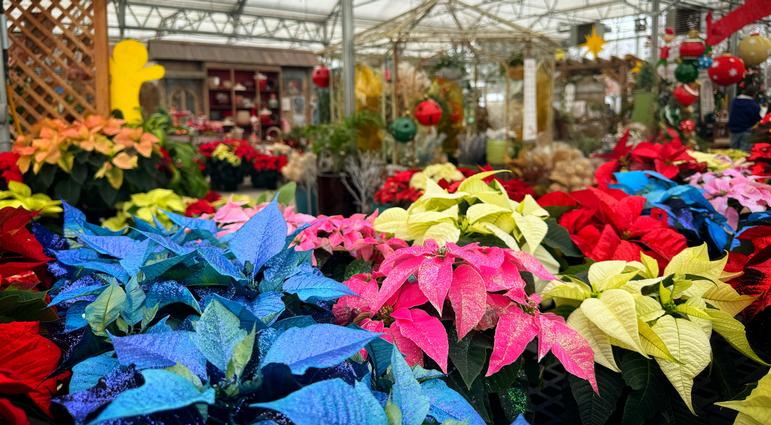Poinsettias, not just for Christmas

First, let’s look at some basic care tips once you have chosen the perfect one. Protect the plant from the elements on its trip from the store to your home. Place the plant in a room with plenty of bright, natural light. Keep out of drafts and away from appliances and refrigerators, and never place it on the television set.
Water only when dry at first, being careful not to overwater. Discard any excess water that runs through the pot's drainage holes. If wrapped in foil, ensure the pot doesn't sit in water inside the decorative wrap. When I talk with someone who had trouble with their plant surviving no more than a month or two, after a few questions, it always ends up being that it was over-watered.
A good way to care for and remember when to provide extra attention to your poinsettia is by coordinating your care schedule with specific holidays. Here's how:
NEW YEAR'S DAY--Fertilize with an all-purpose houseplant fertilizer at recommended rates. I use fish and seaweed fertilizer. Provide adequate light and water for a prolonged bloom for several weeks.
VALENTINE'S DAY--Check your plant for signs of insects such as white flies. If your plant has become long and leggy, cut back to about five inches tall.
ST. PATRICK'S DAY--Remove faded and dried parts of the plant. Add more soil, preferably a commercially available sterile soil mix. Keep the plant in a very bright interior location.
MEMORIAL DAY--Trim off two to three inches of branches to promote side branching. Repot to a larger container using a sterile growing mix. Usually, they will outgrow that pot from last year or become root-bound.
FATHER'S DAY--Move the plant outside for the summer; place it in indirect light. A bright spot out of the sun is perfect!
FOURTH OF JULY--Trim the plant again. Move it into full sun. Continue to water and fertilize but increase the amount to accelerate growth. You can water more now because it is actively growing, and along with that, will need more food as well. Check daily for water and fertilize about twice a week. Again, I use a Fish and seaweed fertilizer.
LABOR DAY--Move indoors to a spot that gets at least six hours of direct light daily, preferably more. Check for bugs before bringing them inside and treat them if needed. As new growth begins, reduce the amount of fertilizer.
AUTUMNAL EQUINOX--Starting on or near Sept. 21, give the plant 13 hours of uninterrupted darkness (put the plant in a closet, basement, or under a box) and 11 hours of bright light each day. Maintain night temperatures in the low 60-degree F range. Continue to water and fertilize. Rotate the plant daily to give all sides even light.
THANKSGIVING--Discontinue the short day/long night treatment. Put the plant in a sunny area that gets at least six hours of direct light. Reduce water and fertilizer.
CHRISTMAS--Enjoy your "new" poinsettia and start the whole cycle all over again.
It really isn’t that complicated when you break it down this way. Every year your poinsettia will get bigger and offer even more blooms. There’s nothing like growing a plant through its whole growth cycle and being successful. You don’t have to be a plant geek to try this, although it helps.
Happy Gardening!
Michael Timm
